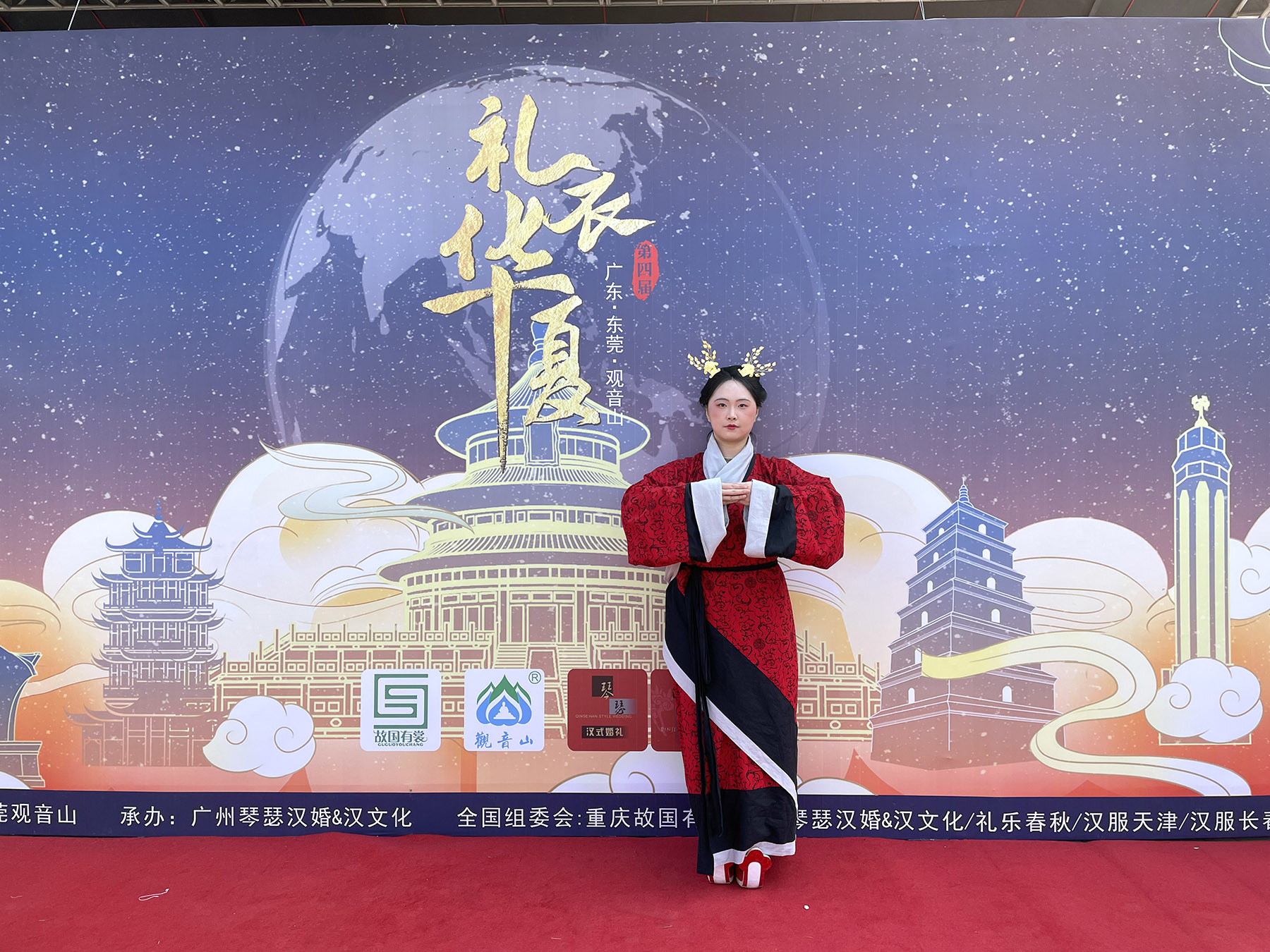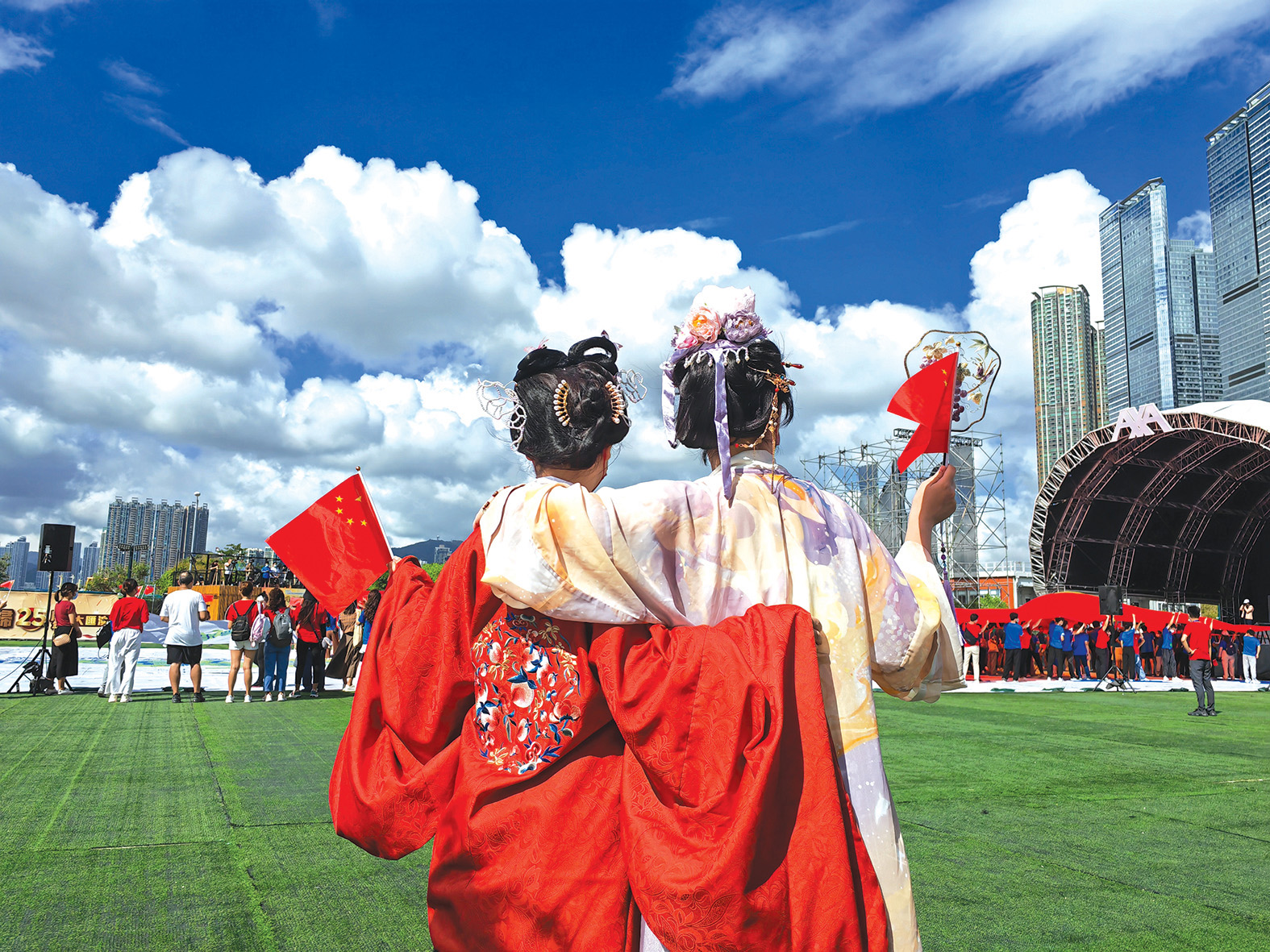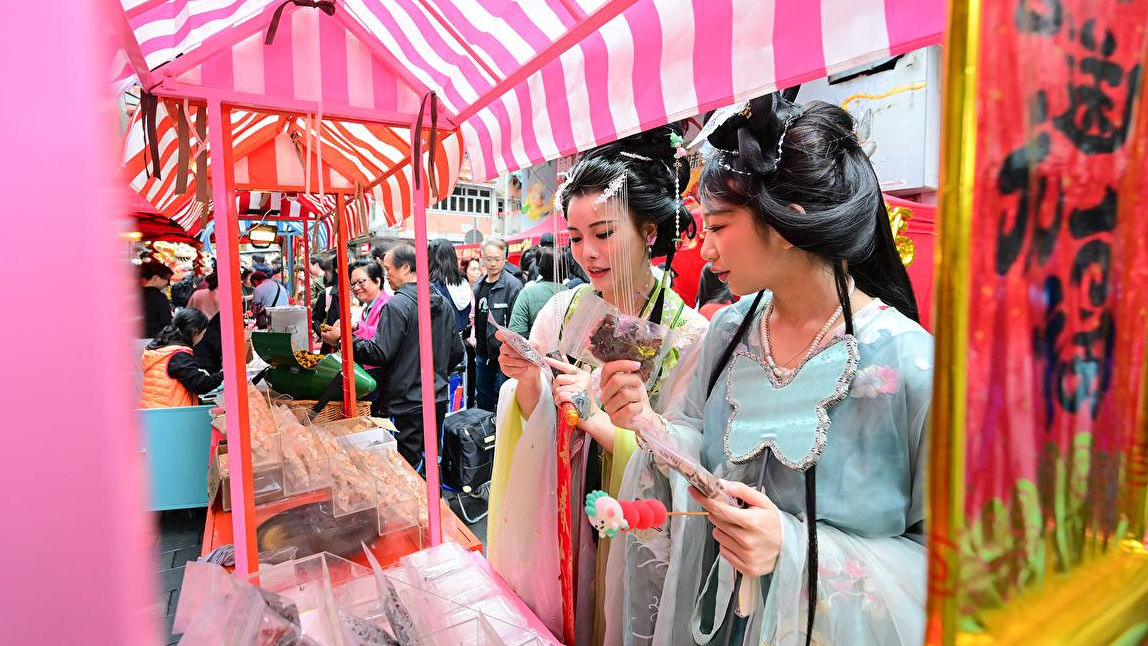Traditional Chinese garments are gaining wide appeal in Hong Kong, winning recognition in the global metropolis. Atlas Shao reports from Hong Kong.

A birthday surprise isn’t easy to come by for 90-year-old Wong, having lived through the length and breadth of human experience, but dressing up in traditional Chinese hanfu this year came as a welcome treat for her.
For a group birthday party this year, Wong and her friends decided to dress up in the ancient Chinese attire, put on elegant makeup and get their photos taken.
It’s remarkable what a bit of dress-up can do to brighten up a party, with almost all guests at pains to say they would like to do it again with their grandchildren and other friends and relatives.
Li Na, vice-chairwoman of the Chinese Culture and Hong Kong Hanfu Association, one of the event’s organizers, sees such a response as typical.
She told China Daily that hanfu is winning an increasing following in the Hong Kong Special Administrative Region among people of different ages and her association is growing by the day.
“At first, we only had a dozen or so pieces of hanfu, and our members would just need to keep them at home and take them out when needed. Now, we have over 100 pieces and need to rent a warehouse to store them,” she says.
For Li, joining the association more than three years ago has changed her life.
READ MORE: Classic clothing hurrayed in Hong Kong
After finishing her day job as an office worker, Li, driven by a passion for ancient Chinese history and culture, found herself committed to promoting and organizing hanfu-related activities.
Promoting hanfu has become easier than before. With growing exposure on social media platforms, more and more people are interested and willing to learn about it, she says. The association constantly receives inquiries about events and invitations to collaborate from different sectors.
Interest has gone up through a variety of different interactive events, such as trying on hanfu and making hanfu accessories, which are held by the association for about three times a month.

Gaining traction
Lin Zhihui, a fellow from the Department of Chinese History and Culture at the Hong Kong Polytechnic University, teaches ancient clothing-themed courses, and had been a judge in a hanfu modeling competition. She agreed there’s a trend that young people are more willing to take part in hanfu activities or wear hanfu on special occasions.
“When the hanfu modeling competition was held at Lok Fu Place (a mall in central Kowloon) in 2023, every floor was filled with enthusiastic onlookers,” recalls Lin.
She says people are now more willing to express themselves and wear hanfu, and even incorporate it with modern dresses, such as by wearing a blouse on top. These changes allow people to wear hanfu more often in their daily lives.
As for the influence these changes may have on hanfu’s characteristics, Lin says the tradition itself is changeable, flexible and inclusive. As hanfu becomes easier to practice in modern society, it may encourage more people to learn more about it, helping to promote the traditional attire in the mainstream.
Han Yike, 23, who works in the education sector and fell in love with hanfu six years ago, says she always wears the costume at traditional festivals or major events. “The beauty of hanfu goes beyond its gorgeous appearance. It’s unique and elegant.”

Chinese style
Hanfu joins another form of traditional dress in Hong Kong that has long been preserved in the city — cheongsam, or qipao in Mandarin.
The sewing techniques used in Hong Kong-style cheongsam were included among 20 items inscribed into the city’s first-ever representative list of intangible cultural heritage in 2017. It was later included on the national list in 2021.
Haze Ng Kwok-hei, a committee member of the Hong Kong Cheongsam Association, told China Daily that Hong Kong is the best place in the world for preserving and passing on the art of cheongsam. According to Ng, a large group of skilled tailors from Shanghai moved to Hong Kong in the 1950s, fueling the development of the city’s tailoring industry.
Cheongsam has appeared in several acclaimed Hong Kong films, including In The Mood for Love in 2000, starring Hong Kong actress Maggie Cheung Man-yuk.
The glory days of the Hong Kong film industry have served as a springboard, thrusting traditional attire representing Chinese culture into the international arena.

Technology and tradition
Despite flutters with the silver screen, the traditional techniques used to make cheongsam are being passed down to fewer and fewer people these days, due in part to modern technology and the fact the skills often take from three to seven years to master.
According to Ng, many cheongsam products on the market share only a similar shape to the authentic traditional dress.
For example, Ng says, a standard female cheongsam should have at least three things in common — a standing collar, be folded left over right, and two side slits. “There’s no zipper on the back of a traditional cheongsam, but most of the ones sold on the market today have back zippers.”
Although authentic cheongsam cannot be mass-produced, Ng says Hong Kong’s mature garment technology can still help promote and popularize it so that the public can understand more about the traditional garment, avoiding any conflict between tradition and modernity.
In producing modern cheongsam, some new garment techniques are used, including 3D printing, laser engraving and digital jacquard weaving technology.
There are also more innovative fabric choices for making cheongsam available, such as gambiered Guangdong gauze, corduroy and suit fabric. Ng says computer-aided pattern generation and digital jacquard have been applied to reinvent men’s cheongsam. With a computer-drawn pattern, designers can overlay it onto a template to automatically align the pattern at the front, middle and back seams, saving twice as much fabric in the production process.
Joanne Lau Yee-kwan, a senior lecturer of the Department of Fashion and Image Design at the Hong Kong Design Institute, told China Daily there are a growing number of textile technologies and modern fashion techniques being applied to traditional Chinese attire. For instance, 3D printing can be used to create complex patterns and effects, and even applied to buttons and lace embellishments.
ALSO READ: New Chinese style gives young people a cool everyday choice
Additionally, textile materials that are antibacterial, stain-resistant or self-cleaning can enhance the functionality and durability of clothes. Modern fashion techniques, such as innovative deconstructive tailoring and environmentally friendly design, can be employed to revitalize hanfu, making it more suitable for the needs and tastes of contemporary people and more accessible to the general public, she says.
The acceptance of hanfu hit a new level when Hong Kong’s culture, sports and tourism chief Kevin Yeung Yun-hung and two other government officials wore the clothing in a video promoting the city’s tourism last year.
In Lin’s opinion, Hong Kong, as an East-meets-West city, has an inherent advantage in promoting traditional Chinese clothing, as it attracts people from all over the world.
Echoing Lin, Li believes the acceptance of hanfu is on the rise in Hong Kong. “In the past, when we wore hanfu on the street, others always cast a strange look and even mistook it for Japanese or Korean clothing. However, now, many people will compliment us and proactively ask if it’s hanfu,” says Li, believing that recognition of traditional Chinese attire will continue to grow.
Contact the writer at atlasshao@chinadailyhk.com


